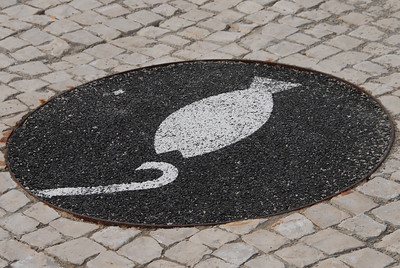
With Christmas Eve and the Italian-American “Feast of the Seven Fishes” a week away I’m in the mood to chat about fish. Truthfully, at times selecting seafood seems about as baffling as choosing a new car. There are so many questions to be answered. Should I buy farm-raised or wild? If I opt for wild-caught, is it at risk of being over-fished? If I go with farmed, how do I know which countries practice safe aquaculture techniques? And shouldn’t I be stocking up on local rather than imported seafood?
Once I tease out the correct answers, I have to determine which fish possesses the greatest health benefits and fewest health risks. Add in concerns about oil-contaminated Gulf Coast catches and I’m tempted to skip cooking and order a pizza instead.
Thankfully, healthful and eco-friendly seafood does exist. The wild European anchovy sits at the top of the Environmental Defense Fund’s “eco-best” seafood list. Although this small, omega-3-rich fish swims in all warm oceans, the most prized come from the Mediterranean Sea. Here the supply is plentiful and the risks of contaminants and unintentionally caught marine life, known as bycatch, are low.
Fresh anchovies impart a rich, buttery flavor that goes well with capers, garlic, lemon, olives, tomatoes and white wine. Oily and soft, they are perfect for baking, broiling, grilling and pan-frying.
Unlike their fresh counterparts, canned anchovies taste quite salty. As a result, they cannot replace fresh ones in recipes. Use canned to garnish pizzas and spice up salads, sandwiches and sauces.
While the over-fished Atlantic cod tops the list of seafood to avoid, the abundant, long-lived “black cod” or sablefish falls firmly into the safe category. Caught wild in Alaska and British Columbia, this firm, oily fish also serves as a good source for omega-3 fatty acids.
Sablefish has pearly white meat and a deep creaminess that favors such seasonings as honey, miso, mustard, sake, sesame oil, soy sauce and sugar. Juicy when cooked, it can be grilled, sautéed, pan-fried, steamed, poached, braised or roasted. Additionally, sablefish’s high fat content makes it excellent for smoking. In fact Jewish delis often sell it under the label “smoked black cod.”
Anchovies and sablefish are just two of many safe, healthful seafood selections. In a few weeks I’ll explore more. Until then, here’s a little something to serve at your feast of seven fishes or at any other holiday fete.
JANSSON’S TEMPTATION
Serves 4
From “Very Swedish” by Triberg, Ranung and Hagman (Bokforlaget Max Strom, 2007)
8 medium potatoes
2 small onions
15-20 anchovies, juices reserved
6 to 7 ounces heavy cream
2 tablespoons breadcrumbs
2 tablespoons butter plus butter for the dish
Preheat the oven to 400 degrees F. Grease an ovenproof dish. Peel potatoes and cut into matchsticks. Peel and slice the onion and fry golden brown in 1 tablespoon of butter.
Spread half the potato matchsticks on the bottom of the oven dish and then the onion and anchovies, pressing down. Pour in the anchovy juices and cream. Sprinkle generously with breadcrumbs and dot with the tablespoon of butter. Bake for 45-50 minutes until the potato is soft and appealingly golden brown.